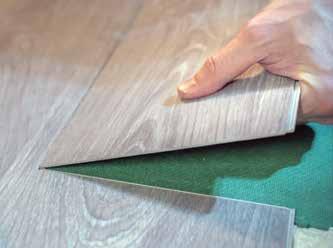
2 minute read
Premium Materials & Premium Performance
Premium Materials and Premium Performance
The key to a beautiful, hard-wearing resilient floor is to match the correct installation materials with the flooring, be it sheet resilient, LVT/LVP, VCT, cork, or rubber.
Advertisement
Much like the pea in the fairy tale “Princess and the Pea,” any irregularities underneath the floor will make themselves known. Undersurface irregularities transmit through the resilient, showing bumps, folds, and creases. Likewise, stains and spills can work their way through to the surface, discoloring the resilient on its way.
The resilient flooring industry has developed protocols and products that neutralize prospective issues before the resilient is installed. Let your installer know the state of the sub-floor and the resilient flooring type, and they will advise you what materials are needed to produce a flawless floor.
Each category of flooring has its specific requirements that may include:
● Underlayments ● Adhesives ● Seam sealants ● Radiant underfloor heating



Underlayments
Where specified, underlayments serve as a buffer between the sub-floor and flooring. Depending on what is required, underlayments can be a board product like plywood, a membrane, or a skim coat. Specific-purpose membrane underlayments reduce noise — a concern in apartments and condos.
Adhesives
Your resilient’s manufacturer will specify what type of installation and adhesive to employ. For example, resilient floors may have adhesive applied across the entire undersurface — a full spread. Another flooring may need tacking along the edges — a perimeter adhere. A floating installation would need no adhesive at all. Adhesives come in many forms — epoxy, latex, low VOC, spray-on, and releasable.
Seam Sealants
Seam sealants perfect the seams in sheet resilient, leaving them impervious to dirt, debris, and moisture. Manufacturers may supply a seam sealant with the color and finish (glossy, matte, satin) paired with the surface and color of your floor.
Electric Radiant Heating
Advances in technology and production make coupling electric radiant heating with your resilient floor a popular choice. With resilient flooring, the heating wire will be embedded in a cementitious bed with 3⁄8-inch coverage, which the flooring product will be installed with direct contact. In addition, floating LVP and LVT floors permit a dry installation, simply running the heating sheets or mesh under the surface. ■










